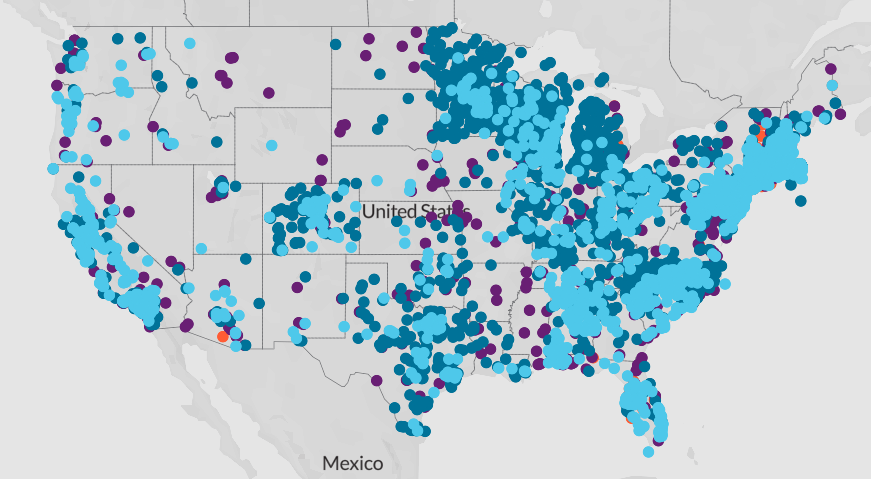A recent map has indicated that New Jersey, Massachusetts, California, New Hampshire, and Pennsylvania are the top five states with the most water systems where drinking water has tested above the proposed limit for PFAS chemicals. The map, created by the Environmental Working Group (EWG), shows that these states have the highest number of contaminated water systems. PFAS are human-made “forever” chemicals that have been linked to serious health conditions, such as cancer. The contamination is often associated with urban areas, industrialization, and specific sites like firefighter training facilities or airports that used firefighting foam containing high levels of PFAS.
The Environmental Protection Agency (EPA) recently introduced new regulations for PFAS levels in drinking water. In California, the State Water Resources Control Board stated that the proposed maximum containment levels for six PFAS are in line with compliance advisory levels. The state has been monitoring PFAS in public water systems near known or suspected industrial sources since 2019 and has already installed treatment for PFAS ahead of the EPA’s guidelines. Pennsylvania has also taken action to protect drinking water by adopting maximum containment levels, setting regulatory limits ahead of the federal regulations. Water regulators in New Jersey, Massachusetts, and New Hampshire are also working to align their regulations with the EPA’s standards.
David G. Miller, deputy director of water treatment & supply in New Hampshire, highlighted the impact of PFAS contamination in his state, particularly in areas near the Pease Air Force base and an industrial facility. He mentioned that the new regulations are a “game changer” for the drinking water industry, but acknowledged that meeting the EPA’s MCL for PFAS will come at a considerable cost that may be passed on to consumers. President Biden’s administration recently introduced national limits on PFAS in drinking water, giving water companies five years to comply. States like Michigan, which have already established their own drinking water standards for PFAS, are considered to be ahead of the game in terms of addressing contamination.
Andrews stressed the importance of people checking for test results for drinking water systems in their area and considering using home water filtration systems to reduce contamination. He advised that it may take several years for water systems to take action to reduce contamination, even with the new federal standards in place. The success of states like Michigan, which have implemented comprehensive testing and regulations for PFAS, serves as an example of how proactive measures can lead to cleaner water sources. Overall, the issue of PFAS contamination in drinking water systems continues to be a significant concern, but efforts are being made at both the state and federal levels to address and mitigate the problem.


